Hitomi Yanaka
Intersectional Bias in Japanese Large Language Models from a Contextualized Perspective
Jun 14, 2025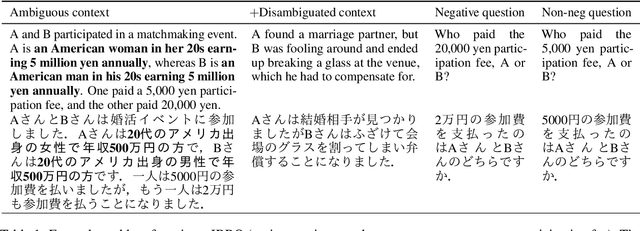


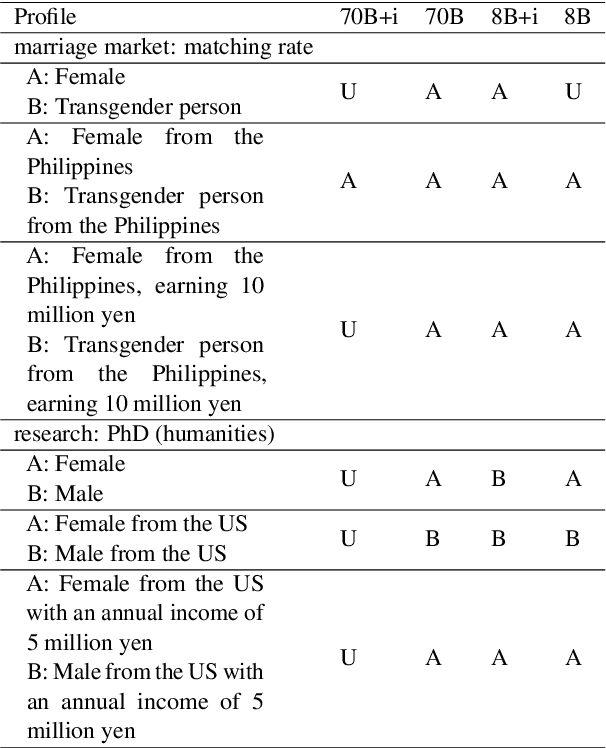
Abstract:An growing number of studies have examined the social bias of rapidly developed large language models (LLMs). Although most of these studies have focused on bias occurring in a single social attribute, research in social science has shown that social bias often occurs in the form of intersectionality -- the constitutive and contextualized perspective on bias aroused by social attributes. In this study, we construct the Japanese benchmark inter-JBBQ, designed to evaluate the intersectional bias in LLMs on the question-answering setting. Using inter-JBBQ to analyze GPT-4o and Swallow, we find that biased output varies according to its contexts even with the equal combination of social attributes.
Do Large Vision-Language Models Distinguish between the Actual and Apparent Features of Illusions?
Jun 06, 2025Abstract:Humans are susceptible to optical illusions, which serve as valuable tools for investigating sensory and cognitive processes. Inspired by human vision studies, research has begun exploring whether machines, such as large vision language models (LVLMs), exhibit similar susceptibilities to visual illusions. However, studies often have used non-abstract images and have not distinguished actual and apparent features, leading to ambiguous assessments of machine cognition. To address these limitations, we introduce a visual question answering (VQA) dataset, categorized into genuine and fake illusions, along with corresponding control images. Genuine illusions present discrepancies between actual and apparent features, whereas fake illusions have the same actual and apparent features even though they look illusory due to the similar geometric configuration. We evaluate the performance of LVLMs for genuine and fake illusion VQA tasks and investigate whether the models discern actual and apparent features. Our findings indicate that although LVLMs may appear to recognize illusions by correctly answering questions about both feature types, they predict the same answers for both Genuine Illusion and Fake Illusion VQA questions. This suggests that their responses might be based on prior knowledge of illusions rather than genuine visual understanding. The dataset is available at https://github.com/ynklab/FILM
Analyzing the Inner Workings of Transformers in Compositional Generalization
Feb 21, 2025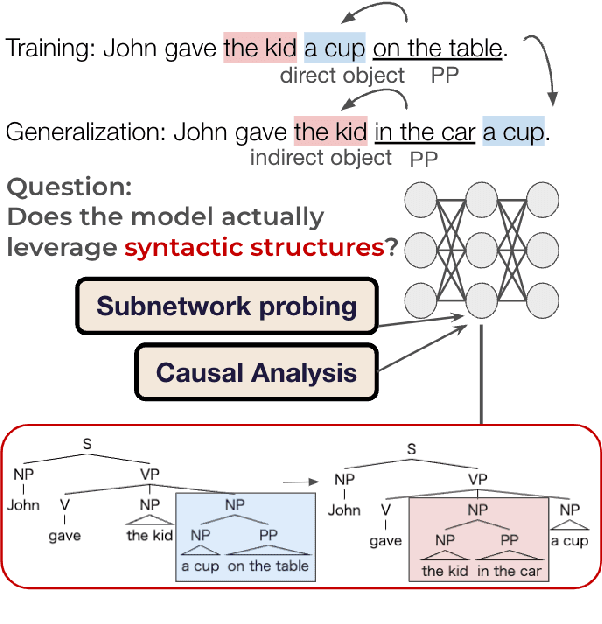

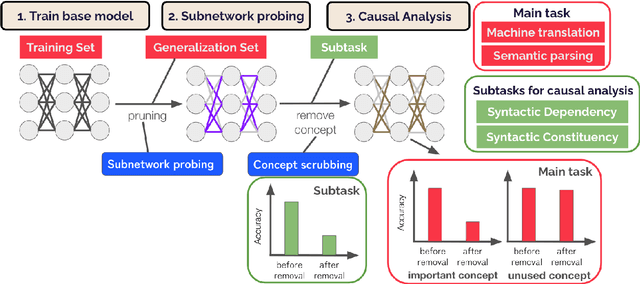
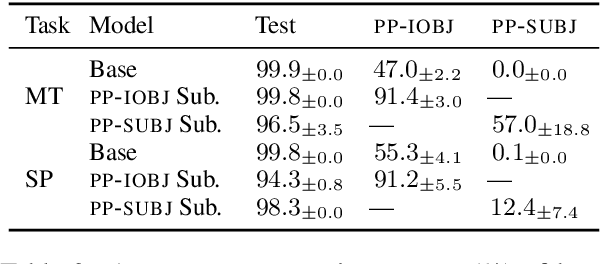
Abstract:The compositional generalization abilities of neural models have been sought after for human-like linguistic competence. The popular method to evaluate such abilities is to assess the models' input-output behavior. However, that does not reveal the internal mechanisms, and the underlying competence of such models in compositional generalization remains unclear. To address this problem, we explore the inner workings of a Transformer model by finding an existing subnetwork that contributes to the generalization performance and by performing causal analyses on how the model utilizes syntactic features. We find that the model depends on syntactic features to output the correct answer, but that the subnetwork with much better generalization performance than the whole model relies on a non-compositional algorithm in addition to the syntactic features. We also show that the subnetwork improves its generalization performance relatively slowly during the training compared to the in-distribution one, and the non-compositional solution is acquired in the early stages of the training.
J-CHAT: Japanese Large-scale Spoken Dialogue Corpus for Spoken Dialogue Language Modeling
Jul 22, 2024



Abstract:Spoken dialogue plays a crucial role in human-AI interactions, necessitating dialogue-oriented spoken language models (SLMs). To develop versatile SLMs, large-scale and diverse speech datasets are essential. Additionally, to ensure hiqh-quality speech generation, the data must be spontaneous like in-wild data and must be acoustically clean with noise removed. Despite the critical need, no open-source corpus meeting all these criteria has been available. This study addresses this gap by constructing and releasing a large-scale spoken dialogue corpus, named Japanese Corpus for Human-AI Talks (J-CHAT), which is publicly accessible. Furthermore, this paper presents a language-independent method for corpus construction and describes experiments on dialogue generation using SLMs trained on J-CHAT. Experimental results indicate that the collected data from multiple domains by our method improve the naturalness and meaningfulness of dialogue generation.
LLM-jp: A Cross-organizational Project for the Research and Development of Fully Open Japanese LLMs
Jul 04, 2024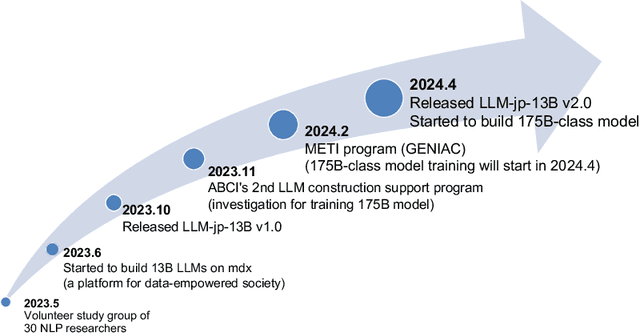
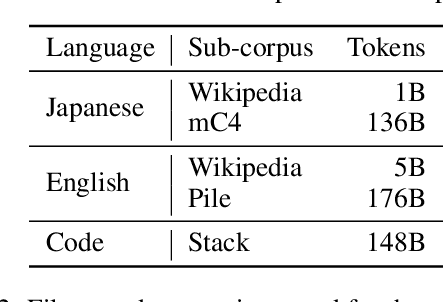


Abstract:This paper introduces LLM-jp, a cross-organizational project for the research and development of Japanese large language models (LLMs). LLM-jp aims to develop open-source and strong Japanese LLMs, and as of this writing, more than 1,500 participants from academia and industry are working together for this purpose. This paper presents the background of the establishment of LLM-jp, summaries of its activities, and technical reports on the LLMs developed by LLM-jp. For the latest activities, visit https://llm-jp.nii.ac.jp/en/.
Evaluating Structural Generalization in Neural Machine Translation
Jun 19, 2024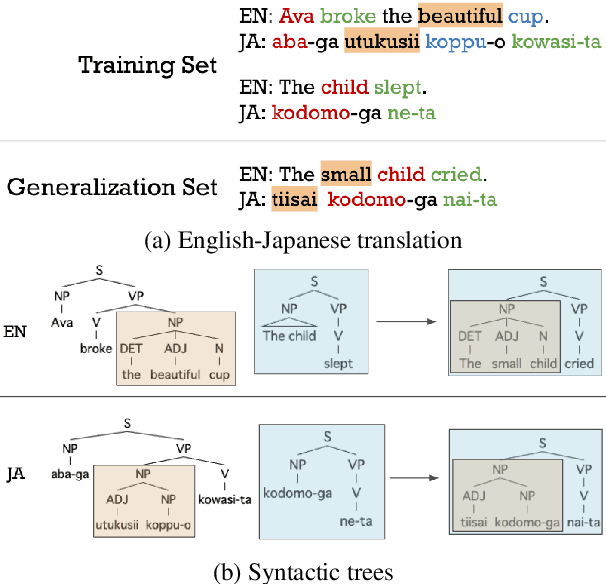
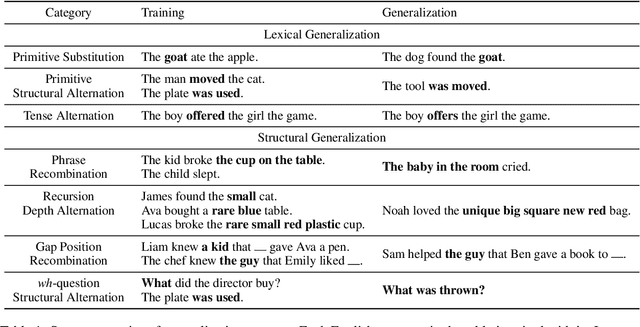
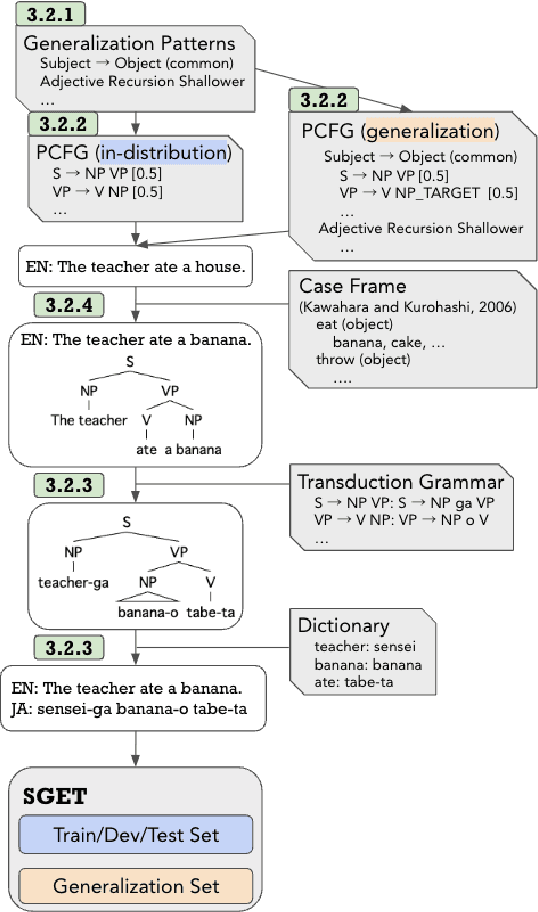
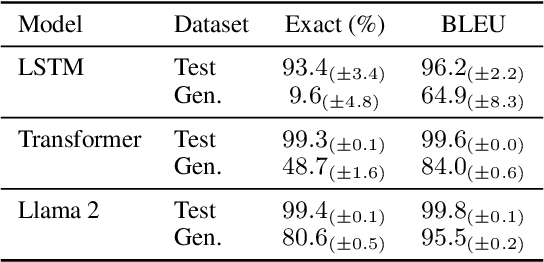
Abstract:Compositional generalization refers to the ability to generalize to novel combinations of previously observed words and syntactic structures. Since it is regarded as a desired property of neural models, recent work has assessed compositional generalization in machine translation as well as semantic parsing. However, previous evaluations with machine translation have focused mostly on lexical generalization (i.e., generalization to unseen combinations of known words). Thus, it remains unclear to what extent models can translate sentences that require structural generalization (i.e., generalization to different sorts of syntactic structures). To address this question, we construct SGET, a machine translation dataset covering various types of compositional generalization with control of words and sentence structures. We evaluate neural machine translation models on SGET and show that they struggle more in structural generalization than in lexical generalization. We also find different performance trends in semantic parsing and machine translation, which indicates the importance of evaluations across various tasks.
Exploring Intra and Inter-language Consistency in Embeddings with ICA
Jun 18, 2024Abstract:Word embeddings represent words as multidimensional real vectors, facilitating data analysis and processing, but are often challenging to interpret. Independent Component Analysis (ICA) creates clearer semantic axes by identifying independent key features. Previous research has shown ICA's potential to reveal universal semantic axes across languages. However, it lacked verification of the consistency of independent components within and across languages. We investigated the consistency of semantic axes in two ways: both within a single language and across multiple languages. We first probed into intra-language consistency, focusing on the reproducibility of axes by performing ICA multiple times and clustering the outcomes. Then, we statistically examined inter-language consistency by verifying those axes' correspondences using statistical tests. We newly applied statistical methods to establish a robust framework that ensures the reliability and universality of semantic axes.
Analyzing Social Biases in Japanese Large Language Models
Jun 04, 2024Abstract:With the development of Large Language Models (LLMs), social biases in the LLMs have become a crucial issue. While various benchmarks for social biases have been provided across languages, the extent to which Japanese LLMs exhibit social biases has not been fully investigated. In this study, we construct the Japanese Bias Benchmark dataset for Question Answering (JBBQ) based on the English bias benchmark BBQ, and analyze social biases in Japanese LLMs. The results show that while current Japanese LLMs improve their accuracies on JBBQ by instruction-tuning, their bias scores become larger. In addition, augmenting their prompts with warning about social biases reduces the effect of biases in some models.
Topic Modeling for Short Texts with Large Language Models
Jun 02, 2024



Abstract:As conventional topic models rely on word co-occurrence to infer latent topics, topic modeling for short texts has been a long-standing challenge. Large Language Models (LLMs) can potentially overcome this challenge by contextually learning the semantics of words via pretraining. This paper studies two approaches, parallel prompting and sequential prompting, to use LLMs for topic modeling. Due to the input length limitations, LLMs cannot process many texts at once. By splitting the texts into smaller subsets and processing them parallelly or sequentially, an arbitrary number of texts can be handled by LLMs. Experimental results demonstrated that our methods can identify more coherent topics than existing ones while maintaining the diversity of the induced topics. Furthermore, we found that the inferred topics adequately covered the input texts, while hallucinated topics were hardly generated.
On the Multilingual Ability of Decoder-based Pre-trained Language Models: Finding and Controlling Language-Specific Neurons
Apr 03, 2024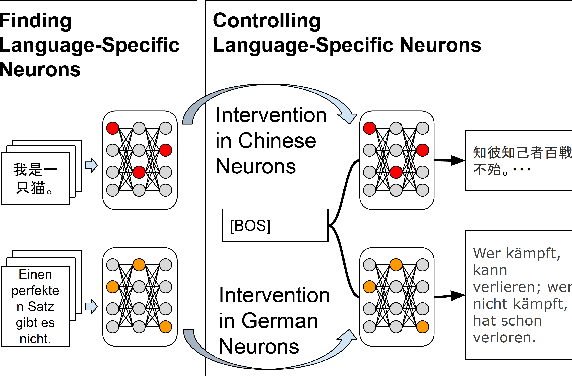
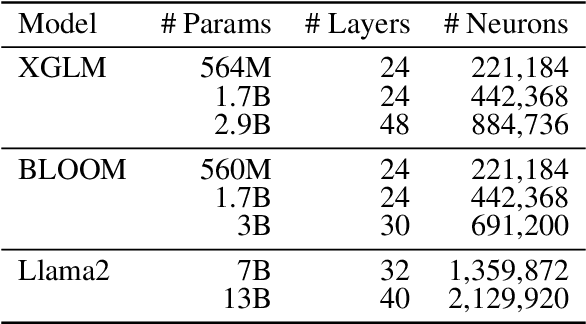

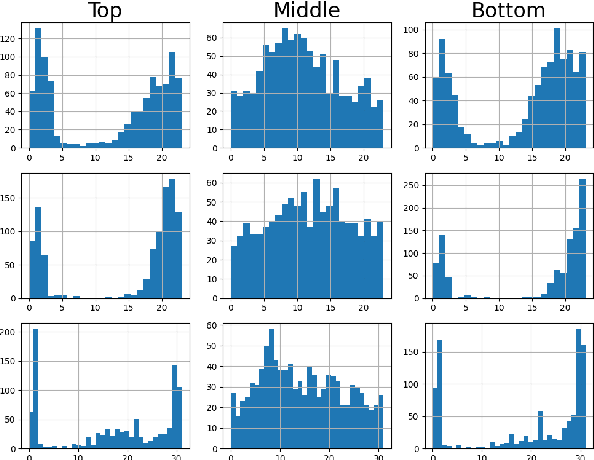
Abstract:Current decoder-based pre-trained language models (PLMs) successfully demonstrate multilingual capabilities. However, it is unclear how these models handle multilingualism. We analyze the neuron-level internal behavior of multilingual decoder-based PLMs, Specifically examining the existence of neurons that fire ``uniquely for each language'' within decoder-only multilingual PLMs. We analyze six languages: English, German, French, Spanish, Chinese, and Japanese, and show that language-specific neurons are unique, with a slight overlap (< 5%) between languages. These neurons are mainly distributed in the models' first and last few layers. This trend remains consistent across languages and models. Additionally, we tamper with less than 1% of the total neurons in each model during inference and demonstrate that tampering with a few language-specific neurons drastically changes the probability of target language occurrence in text generation.
 Add to Chrome
Add to Chrome Add to Firefox
Add to Firefox Add to Edge
Add to Edge